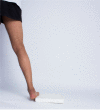Virtual orthopedic assessment: Main principles and specific regions
- PMID: 34631451
- PMCID: PMC8472440
- DOI: 10.5312/wjo.v12.i9.672
Virtual orthopedic assessment: Main principles and specific regions
Abstract
Telemedicine was originally created as a way to treat patients who were located in remote places far away from local health facilities or in areas with shortages of medical professionals. Telemedicine is still used today to address those problems, and is increasingly becoming a tool for convenient medical care. With the emergence of pandemics, telemedicine became almost a mandatory and valuable option for continuing to provide medical care in various specialties. As the threat of pandemic progress has continued for months and may continue for years, it is essential to validate existing tools to maintain clinical assessment and patient treatment to avoid negative consequences of the lack of medical follow-up. Therefore, the establishment of a virtual assessment technique that can be conducted effectively is of outmost importance as a way of adapting to the current situation. This study evaluated the role of telemedicine in the assessment of various orthopedic pathologies by means of a systematic virtual evaluation.
Keywords: Epidemic diseases; Orthopedics; Telemedicine; Virtual assessment.
©The Author(s) 2021. Published by Baishideng Publishing Group Inc. All rights reserved.
Conflict of interest statement
Conflict-of-interest statement: The authors declare that they have no conflicting interests.
Figures







References
-
- Ekeland AG, Bowes A, Flottorp S. Effectiveness of telemedicine: a systematic review of reviews. Int J Med Inform . 2010;79:736–771. - PubMed
-
- National Consortium of Telehealth Resource Centers. CTEC program guide room design. Available from: http://www.telehealthresourcecenter.org/sites/main/files/file-attachment... .
Publication types
Grants and funding
LinkOut - more resources
Full Text Sources
Research Materials

